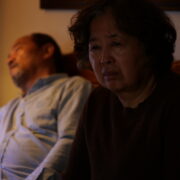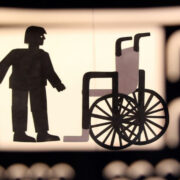JIGSAW: A Puzzle With Many Missing Pieces
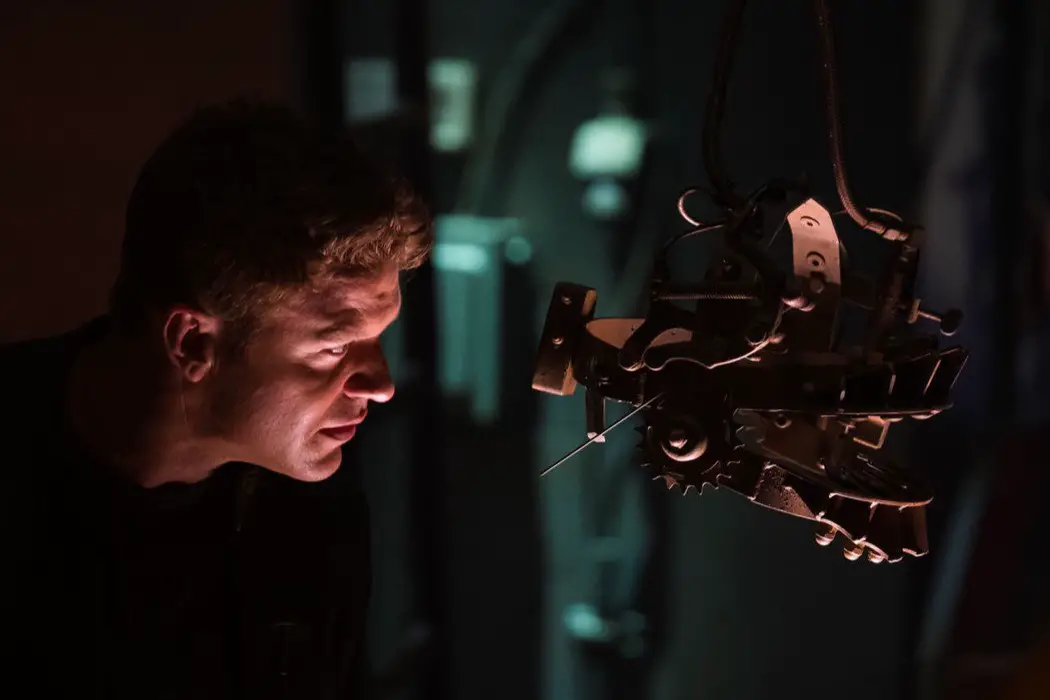
Stephanie Archer is 39 year old film fanatic living in…
On October 29, 2004, the world was introduced to the puzzling mind of John Kramer – the Jigsaw killer who would elude police, as well as death, over the course of seven films. His legacy and diabolical form of rehabilitation would entrance horror fans alike and become a classic horror franchise. Returning 13 years later, Jigsaw hopes to be the reboot fans of the franchise didn’t know they needed.
After a week of catching up on the older films, Jigsaw was a change of pace from a saga that fell more on engulfing itself in torture porn than recreating the twisty unpredictability of the first film. I personally had always hoped the Final Chapter would not be the last, and while this was not the best installment, it was by no means the worst. I found myself mostly impressed with how the film turned out, especially since I had been expecting Jigsaw to be dead on arrival.
With that said, however, Jigsaw is not without its problems and missed opportunities. The film is sprinkled with references from several of the previous films, yet many will be lost on audience members that did not view the entire saga. A call back to Carey Elwes and Leigh Whannell tied up in the abandon bathroom was one of the most obvious in the films, while the more gruesome devices, such as the rib spreader, may seem like a random addition to the film.
“I Want to Play Game”
From the moment Jigsaw begins, the familiar and intense score of Saw plays in a renovated rendition, setting the mood and heightening the excitement. Yet, the foreboding and ominous music is misleading, as the film only partly delivers what the initial score promises.
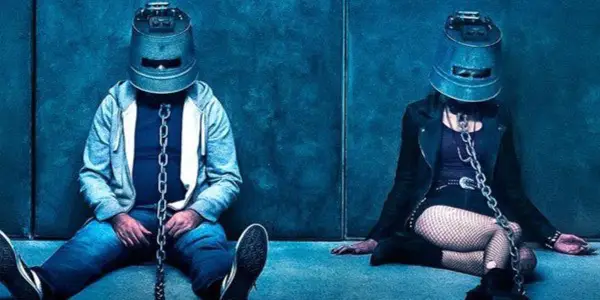
Picking up seven years after the Final Chapter and ten years after the death of Jigsaw, the world has forgotten the infamous serial killer, only obsessed digital accolades still keeping his memories alive on the dark web. With this in mind, it is no surprise that, when a man running frantically from police cries that he must click the detonator and make his choice, the police seem confused and bewildered. Edgar Munsen (Josiah Black) screams out that it is his life or the lives of five others – with the click of the detonator a new game will begin. Condemning the lives of the five unknown, he does just that.
Moments later, the nostalgia of the film comes unfortunately sweeping back as five unconscious individuals, lined up against the wall, await their absolution. With rigged buckets on their heads and chains around their necks, a new game is moments from beginning. They are given a choice, “live or die”, and the games commence – though not as gruesome or as clever as games we have seen in the past.
As the five new victims make their choice, bodies begin to appear around the city, bringing fear and confusion. Is the Jigsaw killer back? John Kramer has been dead for ten years and there had been no trace of a continued legacy – so why now?
As the bodies continue to pile up, a pair of detectives (Callum Keith Rennie and Clé Bennett) and a pair of coroners (Logan Nelson and Hannah Emily Anderson) attempt to solve the mystery and find the answers before it is too late.
“Make Your Choice”
The success or failure of Jigsaw weighed heavily on the choices made throughout the entire production and filming. There needed to be nostalgia, gore, and a cleverly devised script. The bar had been set high years ago with Saw, and while the sequels had been unable to reach the same height as the first, there would be an even greater expectation on the reboot. Unfortunately, what Jigsaw delivered was a mixed result of both good and bad decisions.
With a series over a decade old, there was definitely room for some serious modernization, yet I found this to be lacking within Jigsaw. Using a pen drive as a tool to communicate messages to police was definitely something that was not used in previous installments and brought the saga more up to speed, yet I was expecting something more, in-depth. While many will argue there is a reason for this lack of involvement, there were moments and scenes (such as advanced forensic technology maybe?) where modernization would have made sense, and even possibly elevated the film.
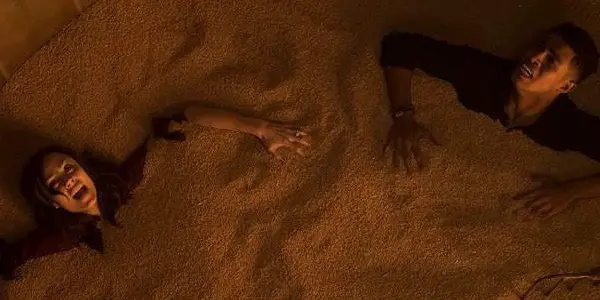
Editing was also changed within Jigsaw versus previous films. The rapid fire and chaotic editing when a victim is faced with their personal understanding and comprehension of “live or die” was watered down and not as effective in creating further tension and distortion within a scene. Throughout the entire film, the editing was clean and crisp. Honestly, it seemed rather basic. The lighting that frequently accompanied this chaotic editing was also chosen to be different from the originals. Gone was the green tinge from the original film, and in swept crisp and bright colors. While I was not opposed to this choice, I did find myself missing the grunge look of the previous films – as well as the implied meaning of the lack of light in the originals (we need to pull ourselves out of our darkness).
One of the strongest and most noticeable choices was the lack of gore and carnage. Yes, bodies are piling up, but not how you would think and not like the original films – and not because in a decade we have become more desensitized as an audience (at least not in this case). James Wan and Leigh Whannell eventually left the franchise, as the studio was pushing for more gore and and focusing less on their creative twisty stories. This film seemed like an attempted compromise between these two goals – however neither ever reaches their full strength or potential.
Humor was a great additive within Jigsaw that in retrospect could have, at times, possibly elevated the previous films – especially with the degrading quality of the final few sequels. Sadly, however, this humor, at times, was probably not the intention of writers Pete Goldfinger and Josh Stolberg – only attributing to a potential missed mark within the film. Even still, I had never thought of humor as an element of the series, and until seeing it utilized, never realized how much of an asset it could have been.
“Live or Die”
The question now is – was it enough? Will the franchise live on in future sequels, our will it wither out? There definitely was (without spoiling) a window left open for further installments to be created. Yet, looking at many of the elements used, would it work? The same formula cannot be applied and reapplied – it’s why the franchise eventually died out.

Jigsaw does nothing ingenious to help fix the convoluted timeline created by the previous sequels, yet tries to include itself as well as stand on its own, leading the film to feel random at times. There was nothing necessarily shocking about this film either. Jigsaw had an intriguing twisty plot one would expect – yet it was nothing really new. For the franchise to continue, the next film would need to either break away from the timeline to distance itself from the confusion or find a way to turn the franchise on its head – find inspiration in the old but create new originality for the future.
Again, trying not to spoil, but there is a good tribute to Tobin Bell‘s character – Jigsaw may be gone but not forgotten. Yet, I am not sure how much juice can further be squeezed out of this character if the series were to continue. The studio could return to the initial accolades that survived the first seven films (which is not showcased here), yet I feel in order for this series to have a future it would need to continue to break free and introduce new, enticing characters.
One of my biggest complaints about this film that could work to the advantage of future installments was the somewhat low key nostalgia of Jigsaw. Within the film there really is no overkill of nostalgia, opening a window for further use in the future. This tool of nostalgia could spawn new original and inspired ideas, as well as satisfy the expectations of fans and audience members alike.
Conclusion: Jigsaw
While not the worst installment in the Saw saga, or even the worst reboot, Jigsaw does leave much to be desired. If you are looking for classic Saw, unfortunately this film only partially delivers, with the same being said for its attempt at fresh originality.
Have you seen Jigsaw? Do you think it was enough to bring about further installments? Tell us your thought in the comments below!
Jigsaw was released in the United States and and the United Kingdom on October 27, 2017. For all international release dates, see here.
Does content like this matter to you?
Become a Member and support film journalism. Unlock access to all of Film Inquiry`s great articles. Join a community of like-minded readers who are passionate about cinema - get access to our private members Network, give back to independent filmmakers, and more.



